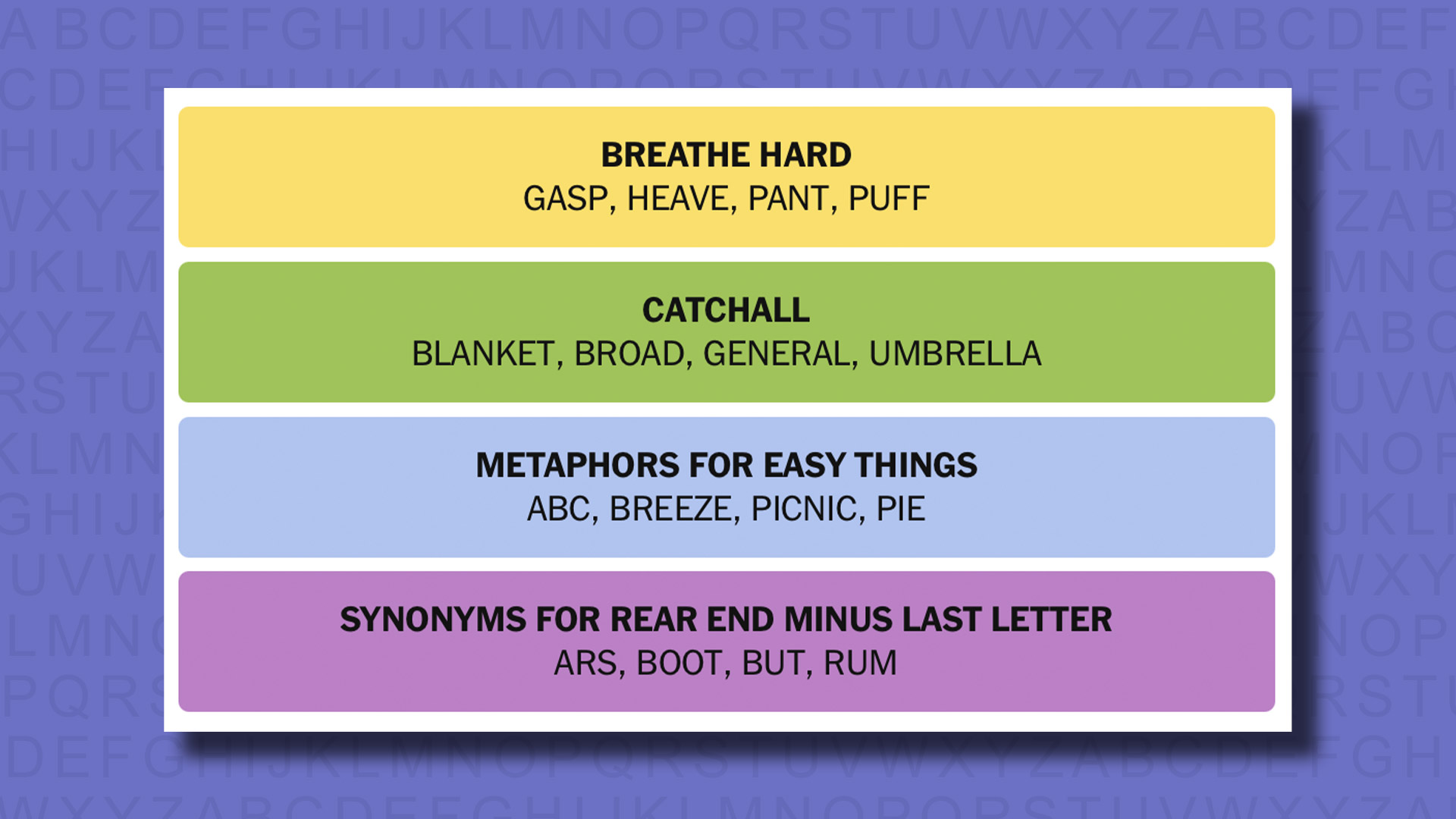Good morning! Let’s play Connections, the NYT’s clever word game that challenges you to group answers in various categories. It can be tough, so read on if you need clues.
What should you do once you’ve finished? Why, play some more word games of course. I’ve also got daily Strands hints and answers and Quordle hints and answers articles if you need help for those too, while Marc’s Wordle today page covers the original viral word game.
SPOILER WARNING: Information about NYT Connections today is below, so don’t read on if you don’t want to know the answers.
NYT Connections today (game #575) – today’s words

Today’s NYT Connections words are…
- BLANKET
- BOOT
- BREEZE
- RUM
- PICNIC
- PANT
- UMBRELLA
- PIE
- HEAVE
- ARS
- АВС
- GENERAL
- BROAD
- GASP
- BUT
- PUFF
NYT Connections today (game #575) – hint #1 – group hints
What are some clues for today’s NYT Connections groups?
- YELLOW: Almost out of breath
- GREEN: Overarching
- BLUE: Simples
- PURPLE: Bottom
Need more clues?
We’re firmly in spoiler territory now, but read on if you want to know what the four theme answers are for today’s NYT Connections puzzles…
NYT Connections today (game #575) – hint #2 – group answers
What are the answers for today’s NYT Connections groups?
- YELLOW: BREATHE HARD
- GREEN: CATCHALL
- BLUE: METAPHORS FOR EASY THINGS
- PURPLE: SYNONYMS FOR REAR END MINUS LAST LETTER
Right, the answers are below, so DO NOT SCROLL ANY FURTHER IF YOU DON’T WANT TO SEE THEM.
NYT Connections today (game #575) – the answers

The answers to today’s Connections, game #575, are…
- YELLOW: BREATHE HARD GASP, HEAVE, PANT, PUFF
- GREEN: CATCHALL BLANKET, BROAD, GENERAL, UMBRELLA
- BLUE: METAPHORS FOR EASY THINGS ABC, BREEZE, PICNIC, PIE
- PURPLE: SYNONYMS FOR REAR END MINUS LAST LETTER ARS, BOOT, BUT, RUM
- My rating: Moderate
- My score: 1 mistake
My BROAD view of today’s Connections is that it was far from a BREEZE but after some huff and PUFF I got there in the (REAR) END – very cheeky group, that one.
My mistake came as I foolishly thought ARS, PIE, ABC and BUT were all organization acronyms – for what, I have no idea – and, well, it was a bit of a lazy guess. But after getting BREATHE HARD and CATCHALL the final two groups fell into place nicely.
Yesterday’s NYT Connections answers (Sunday, 5 January, game #574)
- YELLOW: HARDLY BUSTLING CALM, QUIET, SLEEPY, SLOW
- GREEN: EARN GROSS, MAKE, NET, YIELD
- BLUE: REMOTE CONTROL FUNCTIONS HOME, MUTE, STOP, VOLUME
- PURPLE: WORDS BEFORE “DRUM” EAR, KETTLE, OIL, SNARE
What is NYT Connections?
NYT Connections is one of several increasingly popular word games made by the New York Times. It challenges you to find groups of four items that share something in common, and each group has a different difficulty level: green is easy, yellow a little harder, blue often quite tough and purple usually very difficult.
On the plus side, you don’t technically need to solve the final one, as you’ll be able to answer that one by a process of elimination. What’s more, you can make up to four mistakes, which gives you a little bit of breathing room.
It’s a little more involved than something like Wordle, however, and there are plenty of opportunities for the game to trip you up with tricks. For instance, watch out for homophones and other word games that could disguise the answers.
It’s playable for free via the NYT Games site on desktop or mobile.



























+ There are no comments
Add yours